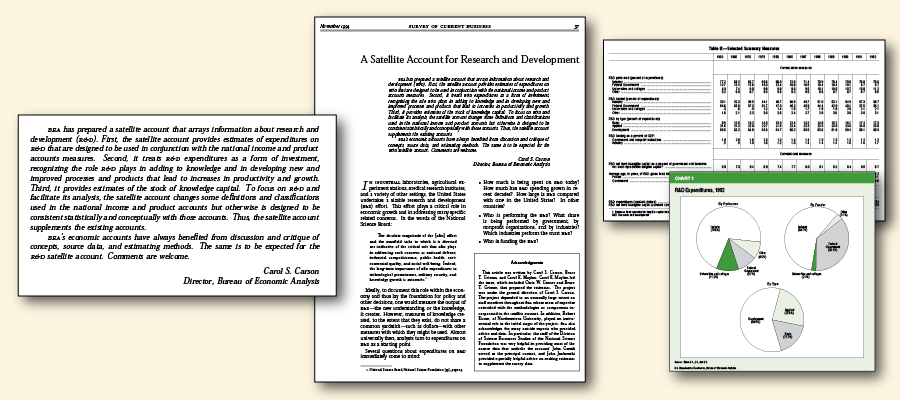Incorporating Satellite Accounts
The Bureau of Economic Analysis (BEA) mission is to provide the most up-to-date statistics on the state of our nation's economy. This requires ongoing, determined efforts to improve the methodology and investments in data and systems to implement new methodologies over time by analyzing, questioning, and critiquing the processes and the results.
One way of expanding BEA's analytical capacity is to create supplemental accounts, known as “satellite accounts,” that focus on specific aspects of the U.S. economy. Satellite accounts do not change the National Economic Accounts; instead, they allow for analysis of a specific aspect of the economy in greater detail. Satellite accounts can take one of two approaches: they can take previously published data for use in the satellite account, or they can produce experimental statistics. Over the years, BEA has created satellite accounts for the environment (a controversial topic at the time), research and development (R&D), tourism and travel, arts and culture, and most recently, the space economy, to name a few.
A selection of callouts from the November 1994 Survey of Current Business article
“A Satellite Account for Research and Development.”
This centennial issue of the Survey of Current Business provides a reprint of the November 1994 article “A Satellite Account for Research and Development.” R&D may be defined as the sum of basic research, applied research, and development. The BEA approach to analyzing R&D and its impact on the economy focuses on expenditures on R&D. This line of research was further extended by additional articles published in the Survey in 2002, 2007, and 2009. In 2013, thanks to BEA's experience with an R&D satellite account, R&D was incorporated into the compilation of gross domestic product.
